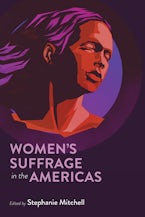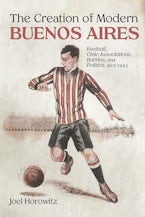- Home
- history
- social science
- To Be Indio in Colonial Spanish America
To Be Indio in Colonial Spanish America
Edited by Mónica Díaz
Published by: University of New Mexico Press
The conquest and colonization of the Americas imposed new social, legal, and cultural categories upon vast and varied populations of indigenous people. The colonizers' intent was to homogenize these cultures and make all of them "Indian." The creation of those new identities is the subject of the essays collected in Díaz's To Be Indio in Colonial Spanish America. Focusing on central Mexico and the Andes (colonial New Spain and Peru), the contributors deepen scholarly knowledge of colonial history and literature, emphasizing the different ways people became and lived their lives as "indios." While the construction of indigenous identities has been a theme of considerable interest among Latin Americanists since the early 1990s, this book presents new archival research and interpretive thinking, offering new material and a new approach to the subject to both scholars of colonial Peru and central Mexico.
Mónica Díaz is an associate professor of history and Hispanic studies at the University of Kentucky. She is the author of Indigenous Writings from the Convent: Negotiating Ethnic Autonomy in Colonial Mexico.
"The authors in this collection--through creative methodologies--offer excellent pathways for future scholars to illuminate diverse perspectives on Native identities in colonial Latin America. . . . This rich volume demonstrates the many ways that Native peoples could adapt, reimagine, and redefine Indigenous citizenship during the colonial period in Spanish America."
--Tribal College Journal
Acknowledgments
Introduction. Indio Identities in Colonial Spanish America
Mónica Díaz
Part One. Discerning Indigenous Voices: Frameworks and Methods
Chapter One. Artifact, Artifice, and Identity: Nativist Writing and Scholarship on Colonial Latin America and Their Legacies
Rolena Adorno
Chapter Two. Holograms of the Voiceless: Indian Slavery and Servitude in Early Colonial Lima, Peru
Nancy E. van Deusen
Part Two. Community and the Articulation of Identities
Chapter Three. Mobilizing Muleteer Indigeneity in the Markets of Colonial Peru
Rachel Sarah O'Toole
Chapter Four. Indios Chinos in Eighteenth-Century Mexico
Tatiana Seijas
Chapter Five. Shifting Identities: Mestizo Historiography and the Representation of Chichimecs
Amber Brian
Part Three. Translation and Alterity in Colonial Texts
Chapter Six. Voicing Mesoamerican Identities on the Roads of the Empire: Alarcón and the Nahualtocaitl in Seventeenth-Century Mexico
Viviana Díaz Balsera
Chapter Seven. The Indigenous Sacred as Evil Otherness in Early Colonial Andes
Rocío Quispe-Agnoli
Part Four. Indigenous Intellectuals
Chapter Eight. Writing the Nahuatl Canon: Ethnicity, Identity, and Posterity According to Chimalpahin
Susan Schroeder
Chapter Nine. Fernando de Alva Ixtlilxóchitl: A New Native Identity
Pablo García Loaeza
Afterword
Yanna Yannakakis
Index










